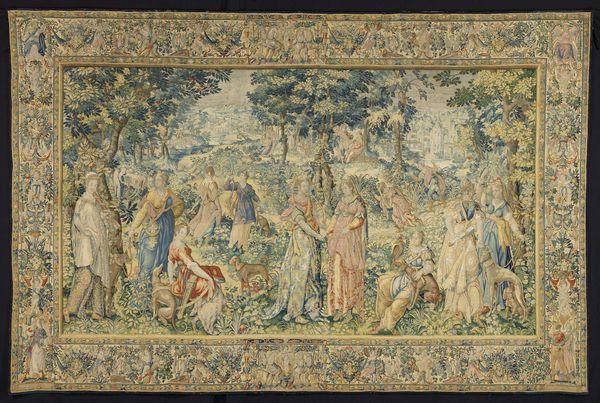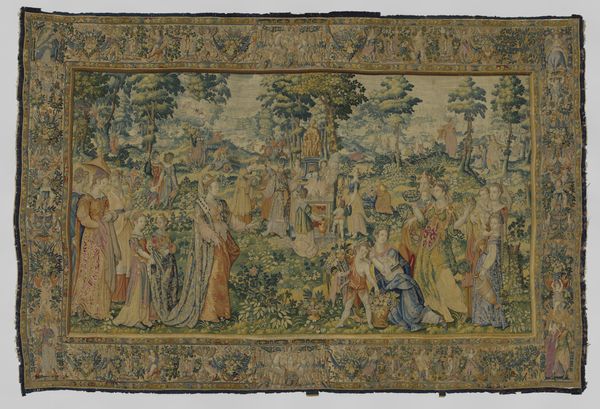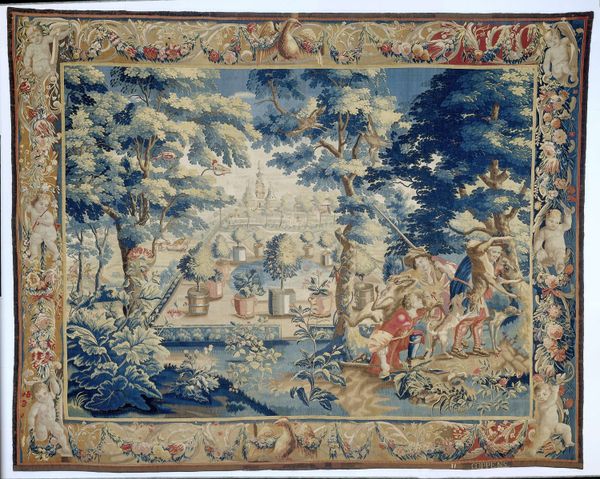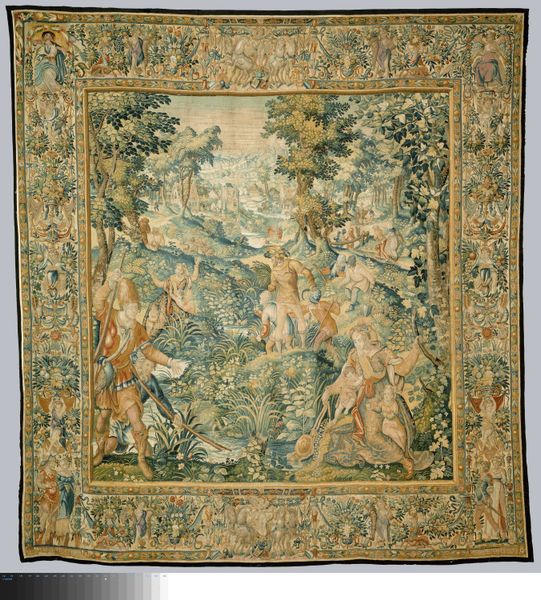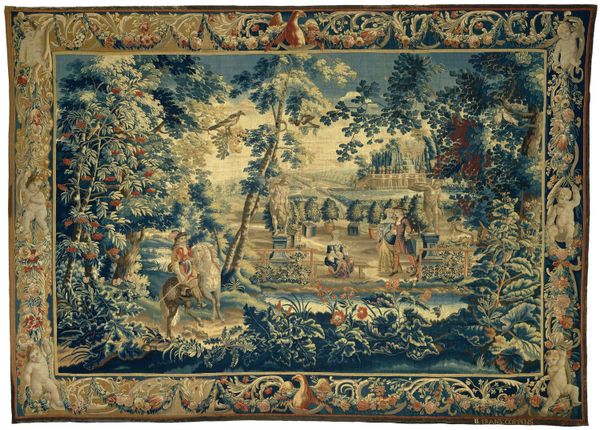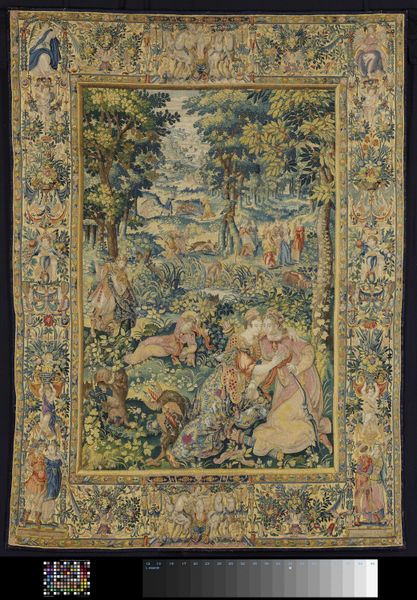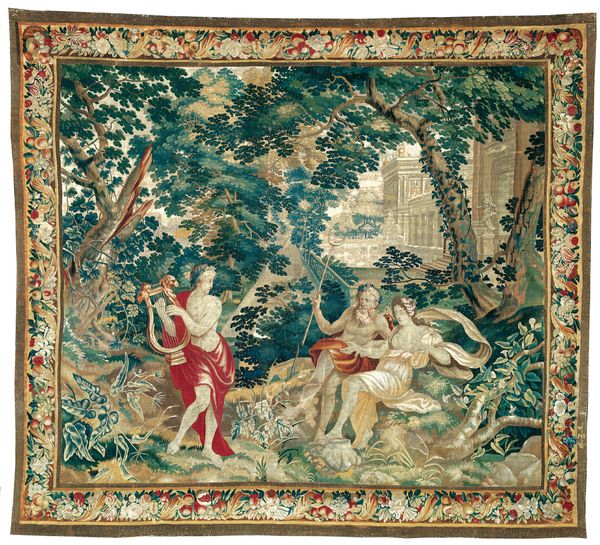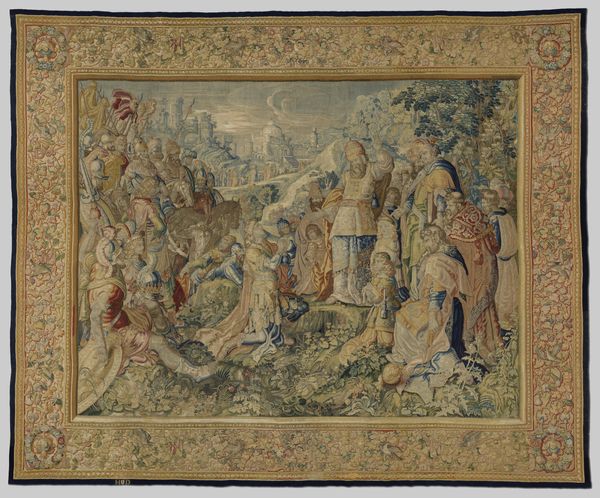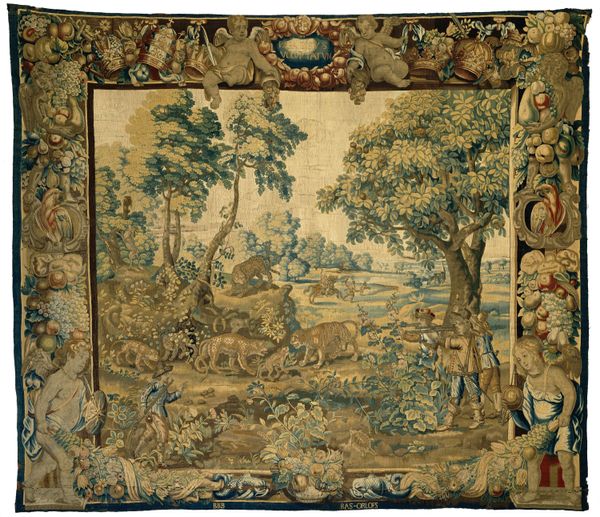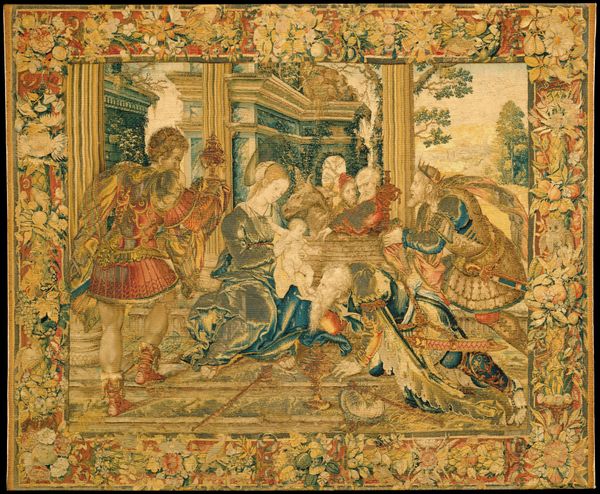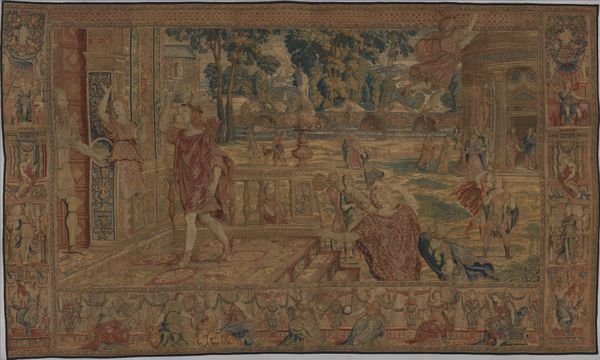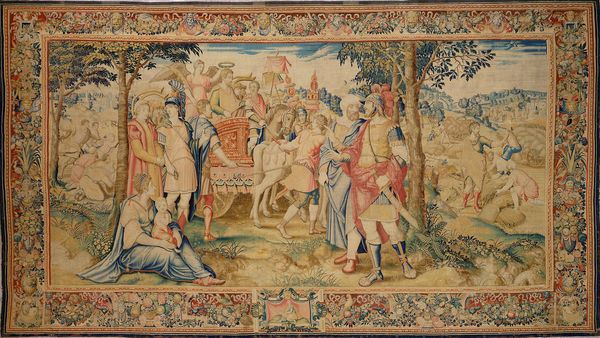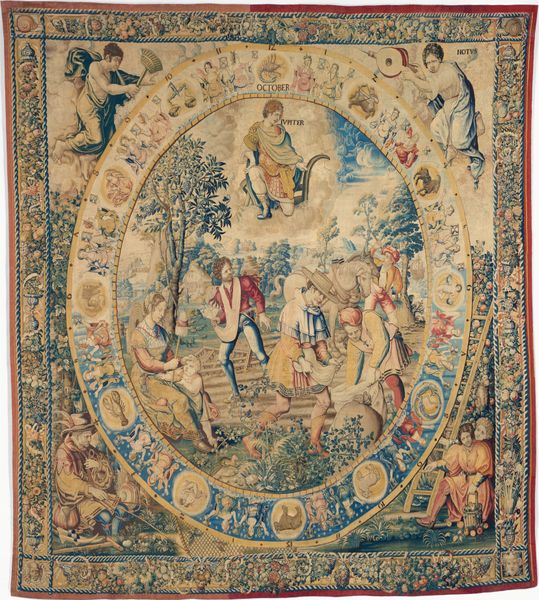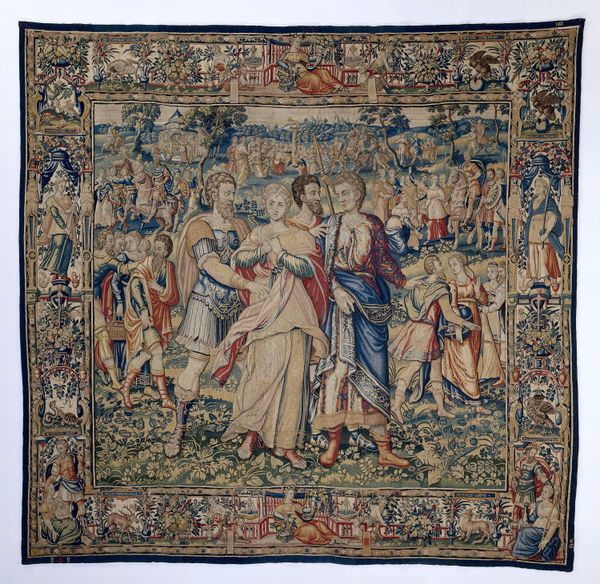
The Liberation of Oriane from a set of Amadis of Gaul 1585 - 1600
0:00
0:00
mixed-media, textile, sculpture
#
mixed-media
#
narrative-art
#
textile
#
mannerism
#
soldier
#
sculpture
#
horse
#
men
#
history-painting
#
decorative-art
#
mixed media
Dimensions: Overall (confirmed): H. 139 x W. 159 1/4 in. (353.1 x 404.5 cm)
Copyright: Public Domain
Curator: Here we have "The Liberation of Oriane," part of a set illustrating "Amadis of Gaul." Karel van Mander I created it between 1585 and 1600. It’s a mixed-media textile currently residing here at the Metropolitan Museum. Editor: It’s incredibly detailed. A very ornate scene! The colors are quite faded but evoke a strong sense of drama, a high-stakes rescue. What can you tell me about the physical processes that went into making this? Curator: The textile construction is intricate. Tapestries of this scale and complexity were incredibly labor-intensive. Artisans used wool and silk threads, carefully dyed and woven on a loom. It likely involved workshops with specialized weavers and designers. Think of the investment in materials, the training of the workers – that is to say that such tapestries signaled affluence and sophistication of the patron. Editor: So, tapestry wasn't just decoration; it was a statement about power and wealth? The symbolism here is overt, look at the heroic figures juxtaposed against the chaotic battle unfolding in the background. The contrast enhances the visual narrative and tells a familiar story of chivalry, love, and rescue. Curator: Exactly. The choice of subject matter from courtly romances also reflects a specific kind of aspirational culture. Woven narratives placed social and ethical models into rooms for daily encounter and provided backdrops for courtly gatherings. Editor: The repetition of floral motifs within the border adds an additional layer of complexity to the central image of rescue and nobility, serving as visual punctuation throughout the design. The borders offer additional imagery as well and draw the viewer's eye in from all angles, enhancing the sensory experience of viewing this work. Curator: True, plus look at how this work challenges our traditional definitions. It combines artistic vision, textile craft, and even elements of social performance into one tangible object. It’s about reframing art through a wider scope. Editor: I agree; seeing these historical stories and symbols expressed materially and thoughtfully brings history to life. This closer consideration of how the story’s symbolism functions intertextually is vital to its ongoing impact. Curator: This tapestry makes us think about the cultural, economic, and even the physical labor woven into its very fabric, literally and metaphorically. Editor: Indeed, understanding its language can unveil deep layers of history woven into a rich textile surface.
Comments
No comments
Be the first to comment and join the conversation on the ultimate creative platform.
